« Prev Next »

Replication and Distribution of DNA during Meiosis
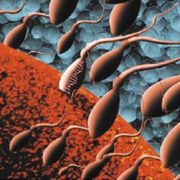
Like mitosis, meiosis is a form of eukaryotic cell division. However, these two processes distribute genetic material among the resulting daughter cells in very different ways. Mitosis creates two identical daughter cells that each contain the same number of chromosomes as their parent cell. In contrast, meiosis gives rise to four unique daughter cells, each of which has half the number of chromosomes as the parent cell. Because meiosis creates cells that are destined to become gametes (or reproductive cells), this reduction in chromosome number is critical — without it, the union of two gametes during fertilization would result in offspring with twice the normal number of chromosomes!
Apart from this reduction in chromosome number, meiosis differs from mitosis in yet another way. Specifically, meiosis creates new combinations of genetic material in each of the four daughter cells. These new combinations result from the exchange of DNA between paired chromosomes. Such exchange means that the gametes produced through meiosis exhibit an amazing range of genetic variation.
Finally, unlike mitosis, meiosis involves two rounds of nuclear division, not just one. Despite this fact, many of the other events of meiosis are similar to those that occur in mitosis. For example, prior to undergoing meiosis, a cell goes through an interphase period in which it grows, replicates its chromosomes, and checks all of its systems to ensure that it is ready to divide. Like mitosis, meiosis also has distinct stages called prophase, metaphase, anaphase, and telophase. A key difference, however, is that during meiosis, each of these phases occurs twice — once during the first round of division, called meiosis I, and again during the second round of division, called meiosis II.
What happens during meiosis I?
As previously mentioned, the first round of nuclear division that occurs during the formation of gametes is called meiosis I. It is also known as the reduction division because it results in cells that have half the number of chromosomes as the parent cell. Meiosis I consists of four phases: prophase I, metaphase I, anaphase I, and telophase I.
Prophase I
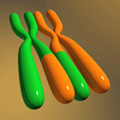
During prophase I, the chromosomes condense and become visible inside the nucleus. Because each chromosome was duplicated during the S phase that occurred just before prophase I, each now consists of two sister chromatids joined at the centromere. This arrangement means that each chromosome has the shape of an X.
Once this chromosomal condensation has occurred, the members of each chromosome pair (called homologous chromosomes, because they are similar in size and contain similar genes), align next to each other. At this point, the two chromosomes in each pair become tightly associated with each other along their lengths in a process called synapsis. Then, while the homologous chromosomes are tightly paired, the members of each pair trade adjacent bits of DNA in a process called crossing over, also known as recombination (Figure 1). This trading of genetic material creates unique chromosomes that contain new combinations of alleles.
Metaphase I

Anaphase I

Telophase I
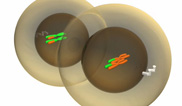
Interkinesis
What happens during meiosis II?
During meiosis II, the two cells once again cycle through four phases of division. Meiosis II is sometimes referred to as an equational division because it does not reduce chromosome number in the daughter cells — rather, the daughter cells that result from meiosis II have the same number of chromosomes as the "parent" cells that enter meiosis II. (Remember, these "parent" cells already have half the number of chromosomes of the original parent cell thanks to meiosis I.)
Prophase II
Metaphase II
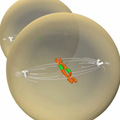
Anaphase II
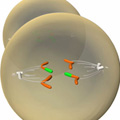
Telophase II
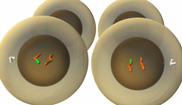
Why is meiosis important?
Further Exploration
eBooks
This page appears in the following eBook





















